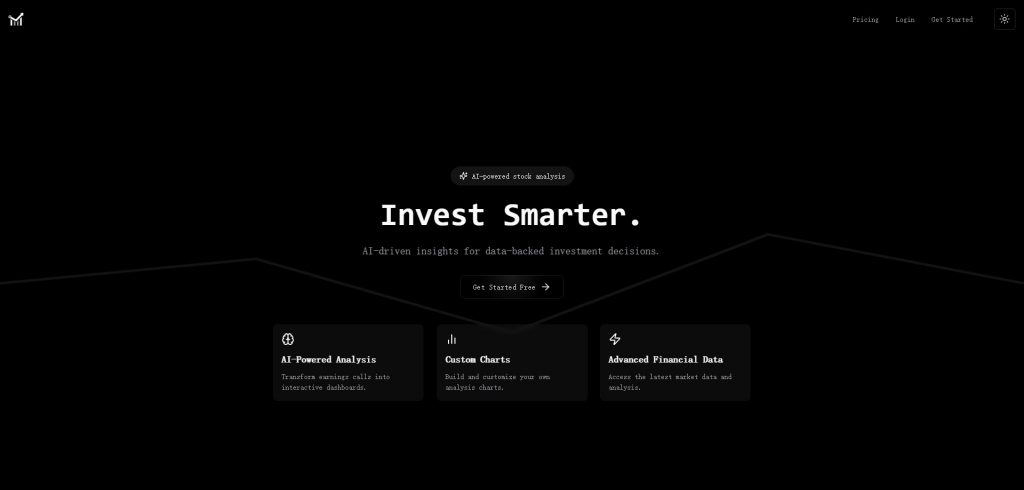Backtesting is vital to optimize AI trading strategies, specifically when dealing with volatile markets such as market for copyright and penny stocks. Here are 10 key tips to help you make the most of backtesting.
1. Know the purpose behind backtesting
Tips: Be aware of how backtesting can improve your decision-making by evaluating the performance of a strategy you have in place using previous data.
This is crucial because it allows you to test your strategy before investing real money in live markets.
2. Make use of high-quality, historical data
Tips: Ensure that your backtesting data contains exact and complete historical prices, volume and other relevant indicators.
In the case of penny stocks: Include information on splits, delistings and corporate actions.
Use market data to reflect events such as the reduction in prices by halving or forks.
Why is that high-quality data yields real-world results.
3. Simulate Realistic Market Conditions
Tip - When performing backtests, be sure to include slippages, transaction costs and bid/ask spreads.
The reason: ignoring this aspect could lead to an overly optimistic perspective on performance.
4. Check out different market conditions
Re-testing your strategy in different market conditions, including bull, bear, and sideways patterns, is a great idea.
What's the reason? Different conditions may impact the effectiveness of strategies.
5. Concentrate on the Key Metrics
Tip: Look at the results of various metrics, such as:
Win Rate (%) Percentage of profit made from trading.
Maximum Drawdown: Largest portfolio loss during backtesting.
Sharpe Ratio: Risk-adjusted return.
Why: These metrics can help you determine the strategy's potential risk and rewards.
6. Avoid Overfitting
Tips: Ensure that your strategy isn't focused on historical data.
Testing with data from a non-sample (data that was not utilized in optimization)
Using simple, robust rules instead of complex models. Use simple, reliable rules instead of complicated.
Why: Overfitting leads to poor real-world performance.
7. Include Transactional Latency
Tips: Use time delay simulations to simulate the time between signal generation for trades and execution.
To calculate the rate of exchange for copyright, you need to be aware of the network congestion.
Why is this? Because latency can impact the entry and exit points, particularly on fast-moving markets.
8. Conduct Walk-Forward Tests
Divide the historical data into multiple times
Training Period Optimization of the strategy.
Testing Period: Evaluate performance.
This lets you test the adaptability of your plan.
9. Combine Backtesting With Forward Testing
TIP: Apply backtested strategies in a demonstration or simulated live-action.
This will help you verify that your strategy works as expected given current market conditions.
10. Document and Iterate
Tip: Keep detailed records of the assumptions, parameters, and the results.
The reason: Documentation can assist improve strategies over the course of time and identify patterns.
Bonus: Get the Most Value from Backtesting Software
Tip: Leverage platforms like QuantConnect, Backtrader, or MetaTrader to automate and robust backtesting.
The reason: Modern technology automates the process to minimize errors.
You can enhance your AI-based trading strategies so that they work on the copyright market or penny stocks by following these tips. Have a look at the best ai stock trading bot free examples for more examples including ai for trading stocks, best stock analysis app, ai for stock trading, copyright ai bot, ai for copyright trading, best ai for stock trading, stock ai, trading bots for stocks, ai stock trading, ai trading and more.

Ten Suggestions For Using Backtesting Tools To Improve Ai Predictions As Well As Stock Pickers And Investments
The use of tools for backtesting is crucial to improve AI stock pickers. Backtesting allows you to test how an AI-driven strategy would have performed in previous market conditions, giving insight into its efficiency. Here are ten top tips for backtesting AI stock analysts.
1. Make use of high-quality historical data
Tips. Be sure that you are making use of accurate and complete historical data, including stock prices, trading volumes and reports on earnings, dividends, or other financial indicators.
The reason: High-quality data is essential to ensure that the results of backtesting are accurate and reflect current market conditions. Incomplete data or incorrect data may lead to false backtesting results, which could undermine the credibility of your plan.
2. Be realistic about the costs of trading and slippage
Backtesting is a great way to create realistic trading costs such as transaction fees commissions, slippage, and the impact of market fluctuations.
What's the problem? Not accounting for trading costs and slippage can overstate the potential returns of your AI model. Including these factors ensures your backtest results are more akin to real-world trading scenarios.
3. Tests for different market conditions
Tip back-testing the AI Stock picker to multiple market conditions like bear or bull markets. Also, consider periods of volatility (e.g. the financial crisis or market correction).
The reason: AI models may perform differently depending on the market context. Examining your strategy in various conditions will show that you have a robust strategy and is able to adapt to market fluctuations.
4. Use Walk-Forward testing
Tip Implement a walk-forward test that tests the model by evaluating it using a an open-ended window of historical information and then comparing the model's performance to data that are not in the sample.
What is the reason? Walk-forward tests can help test the predictive power of AI models that are based on untested data. It is an more accurate gauge of the performance of AI models in real-world conditions than static backtesting.
5. Ensure Proper Overfitting Prevention
Do not overfit the model through testing it with different times. Also, ensure that the model doesn't learn anomalies or noise from historical data.
What causes this? Overfitting happens when the model is too closely tailored to historical data and results in it being less effective in predicting future market movements. A balanced model should be able to generalize to different market conditions.
6. Optimize Parameters During Backtesting
Utilize backtesting software to improve parameters like stopping-loss thresholds and moving averages, or size of positions by changing incrementally.
Why: Optimising these parameters can improve the performance of AI. As previously mentioned it's essential to make sure the optimization doesn’t lead to an overfitting.
7. Drawdown Analysis and Risk Management - Incorporate them
Tips Include risk-management strategies such as stop losses as well as ratios of risk to reward, and position size in backtesting. This will allow you to evaluate your strategy's resilience in the event of a large drawdown.
Why: Effective risk-management is crucial to long-term success. You can identify vulnerabilities through simulation of how your AI model handles risk. You can then alter your approach to ensure more risk-adjusted results.
8. Analyzing Key Metrics Beyond the return
To maximize your return Concentrate on the main performance metrics, including Sharpe ratio, maximum loss, win/loss ratio as well as volatility.
What are they? They provide a more comprehensive knowledge of your AI strategy's risk adjusted returns. The use of only returns can cause a lack of awareness about periods with high risk and volatility.
9. Simulation of various strategies and asset classes
Tip Backtesting the AI Model on a variety of Asset Classes (e.g. ETFs, Stocks, Cryptocurrencies) and different investment strategies (Momentum investing Mean-Reversion, Value Investment,).
The reason: Diversifying your backtest to include different asset classes can help you assess the AI's ability to adapt. You can also ensure that it's compatible with various different investment strategies and market conditions, even high-risk assets, like copyright.
10. Update and refine your backtesting technique often
Tips. Make sure you are backtesting your system with the most current market data. This will ensure that it is current and also reflects the changes in market conditions.
Why the market is constantly changing, and so should be your backtesting. Regular updates will ensure your AI model is still efficient and current in the event that market data change or new data becomes available.
Bonus: Make use of Monte Carlo Simulations for Risk Assessment
Tip: Monte Carlo simulations can be used to model different outcomes. Run several simulations using various input scenarios.
What is the reason? Monte Carlo simulations are a fantastic way to determine the probability of a range of scenarios. They also give a nuanced understanding on risk, particularly in volatile markets.
These tips will help you improve and assess your AI stock selector by leveraging backtesting tools. Backtesting is a fantastic way to ensure that AI-driven strategies are trustworthy and adaptable, allowing you to make better choices in volatile and dynamic markets. See the top rated more tips here for site tips including ai stock, using ai to trade stocks, best ai stock trading bot free, best ai for stock trading, free ai trading bot, ai trading platform, best ai copyright, ai financial advisor, ai in stock market, ai penny stocks to buy and more.
